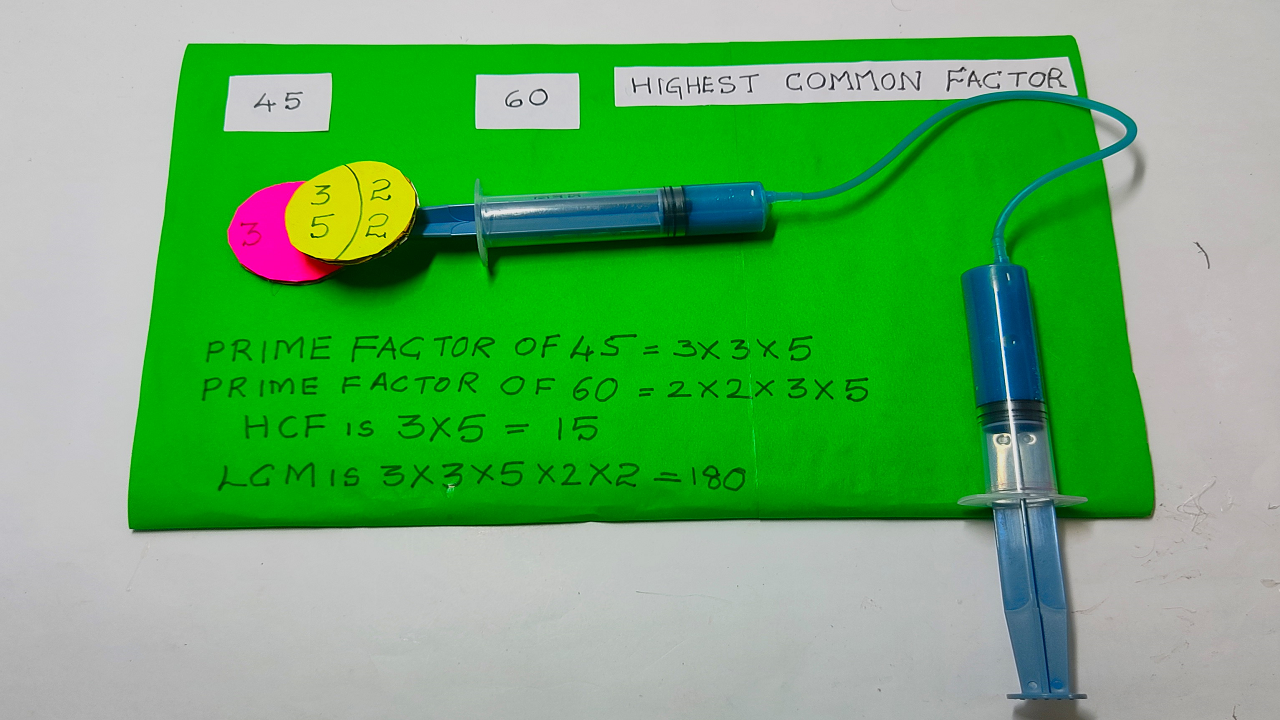Creating a working model to demonstrate the concept of finding the Highest Common Factor (HCF) using syringes and cardboard can be an interesting and interactive project.

Here’s a simple and easy DIY (Do It Yourself) project for understanding HCF and LCM (Lowest Common Multiple):
Materials Needed:
- Cardboard
- Syringes (2 or more)
- Plastic tubing (cut into equal lengths)
- Water or colored liquid (for visibility)
- Funnel
- Markers
- Ruler
- Scissors
- Glue or tape
- Labels or index cards
Steps to Create the HCF Working Model:
Step 1: Prepare the Base:
- Cut a large piece of cardboard to use as the base for your working model.
Step 2: Syringe Setup:
- Attach plastic tubing to the nozzles of each syringe. The tubing should be long enough to reach a common point on the cardboard.
Step 3: Mark the Syringes:
- Use markers to label each syringe with a number representing a factor. For example, if you are finding the HCF of 45 and 60, label one syringe with ’45’ and the other with ’60.’
Step 4: Fill the Syringes:
- Fill each syringe with water using a funnel. The water level should represent the corresponding number on the syringe.
Step 5: Display on Cardboard:
- Attach the syringes to the cardboard, placing them side by side. Make sure the tubing reaches a common point.
Step 6: Find the HCF:
- Gradually press the plunger of each syringe until the water reaches its lowest level.
- Observe where all the water levels align at the same point. This point represents the HCF.
Step 7: Optional – Label the HCF:
- Use labels or index cards to label the common point as the Highest Common Factor.
Explanation:
- Explain that the water levels in the syringes represent the factors of the given numbers.
- Demonstrate how by adjusting the water levels, you can find the HCF where all the levels align.
Extension – LCM:
- If you want to demonstrate LCM as well, you can add more syringes and tubes for additional numbers.
- Show how the LCM is the value when all syringes reach their maximum levels simultaneously.
This DIY working model provides a hands-on way for students to understand the concept of HCF and LCM using syringes and water levels. It offers a visual and interactive representation, making it an effective Teaching-Learning Material (TLM) for mathematical concepts.

